

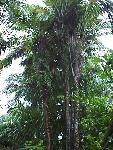
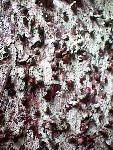

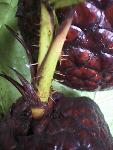

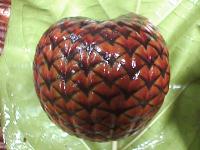
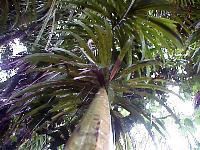









Family: Arecaceae
English name: Ivory Nut Palm
Pohnpeian name: Oahs (Ohs)
Chuukese name: Foun Rüpwung
Kosraen name: None
Yapese name: None
Location collected: Nanmand area.
Date collected: 27 November1998
Collected by: Jenson Santos
Vegetative characteristics:
Habit: Terrestrial; usually found in wet, swampy areas and river sides. Found only on Pohnpei and Chuuk.
Leaf shape and morphology: Leaves are large (25-30ft) in length. Divided once; leaflets are linear and parallel veined (3-4ft. long), even pinnately compound. Leaflets pointing posterior arranged dorsally, unlike coconut palm that has its leaves arranged laterally. Entire but sharp leave margins.
Stem type: Woody (lignified) stem often grows to heights 80 feet (25m) or more. Prickly, large stem 3-5ft. in diameter. Young ones are pubescent.
Floral characteristics: Flowers on large inflorescence branches located axillary. Flowers are produced regularly which enables it to constantly bear fruits.
Fruit: Round (4-6in., 10-15cm) in diameter. Fruit skin (exocarp) is scalelike. Fibrous mesocarp; white meat (endosperm) covering embryo. Embryo is soft when young and hardens when old.
Uses: Ivory leaves are a main source of roof thatch on Pohnpei. The fruit (white meat) is eaten by pigs and shrimps. Young leaves and stem cork (phellem) are important sources of local medicine.
This page hosted by ![]() Get your own Free Home Page
Get your own Free Home Page